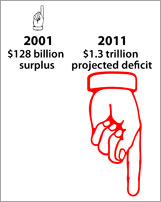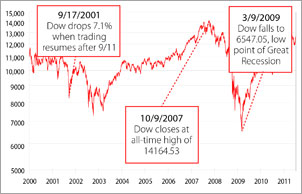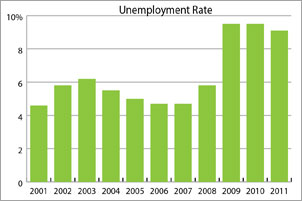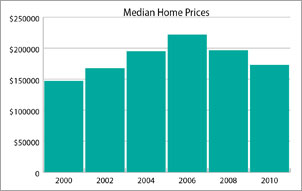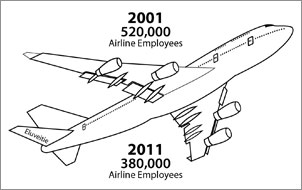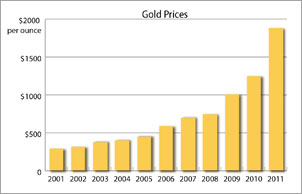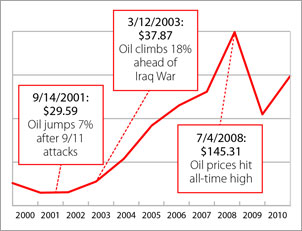6 Credit Report Items That Scare Lenders
You pay your bills on time and never miss a payment. If you're still having trouble with credit, something on your credit report could be scaring lenders.
Everyone knows the big gremlins that haunt credit reports: items such as bankruptcies, foreclosures and even late or missed payments. Less dramatic items can also spark some anxiety in skittish lenders.
When you apply for a loan or a card account, lenders review your credit score and pull your credit report. Or they may take that report and pump it through one of their own scoring systems.
If they don't like what they see, you could be rejected. Or you may get approved with less-favorable terms. And it isn't just new applicants who have to run the gauntlet. Credit card issuers periodically review their current customers' files, too.
Even more confusing is that different lenders zero in on different credit report items. So it's entirely possible that, even for the same loan, no two lenders will see your credit history in exactly the same light.
Think there could be something heinous lurking on your credit report? Here are six items that could scare lenders.
1. Multiplying Lines of Credit
Opening one new card is normal. Opening three in a short amount of time could signal something bad is going on in your financial life.
When it comes to credit card issuers, "the account monitoring window has shrunk," says Norm Magnuson, vice president of public affairs for the Consumer Data Industry Association, the trade association for credit reporting companies. "It used to be months and months. Now you find companies doing account monitoring monthly or every other month."
And the one thing those issuers don't want to see is that you're asking everyone in town to lend you money.
"That would raise some questions," he says. "It could be an indicator of something that's going on. I don't think it's in the best interest of any consumer to go out there and be a collector of credit lines."
2. A Housing Short Sale
"People are told short sales won't hurt their credit," says Maxine Sweet, vice president of public education for credit bureau Experian. "But there is no such thing as a 'short sale' in terms of how the sale is reported to us."
"The way the account is closed out is that it is settled for a lesser amount than you agreed to pay originally," she says. "The status is 'settled.' And it's just as negative as a foreclosure."
One tip: Negotiate so the lender doesn't report the difference between your mortgage and what you repaid as "balance owed" on your credit report, says John Ulzheimer, formerly of FICO, now president of consumer education for SmartCredit.com. Your credit score will take a heavyweight hit, but this action will slightly soften the blow, he says.
Sweet's advice is not to discount the notion of a short sale, just go into it with your eyes open.
"It may be the right decision to get out of the house," she says. It may be "better than a foreclosure in terms of the economy, moving the house and moving on with your life. Just don't expect to walk away with no impact to your credit history."
3. Someone Else's Debt
Here's something you might not know: When you co-sign on the dotted line to help someone else get a loan or a card, that entire debt goes on your credit report.
While the fact you've co-signed is neither good nor bad, it does mean that -- as far as any potential lenders are concerned -- you're carrying that debt yourself. And it will be included in your existing debt load when you apply for a home mortgage, credit card or any other form of credit, says Ulzheimer.
And if the person you co-signed for stops paying, pays late or misses payments, that bad behavior will likely go on your credit report.
So when someone tells you that co-signing is painless because you'll never have to part with a dime, you can tell them that's not true. Co-signing means agreeing not only to repay the obligation if necessary, but also to allow the debt -- and any nonpayment -- to count against you the next time you apply for credit yourself.
Co-signing for a friend or family member "plays well at the Thanksgiving table, but it doesn't play well in the underwriting office," says Ulzheimer.
4. Minimum Payments
While creditors make money when you carry a balance, lenders who view your credit report don't like to see you paying just the minimums.
"It suggests you're under financial stress," says Nessa Feddis, vice president and senior counsel for the American Bankers Association. "You may be defaulting," she says.
Paying minimums once in a while doesn't necessarily signal a problem, she says. For instance, paying minimums in January, after holiday spending. Or paying minimums one month as you wait for your annual bonus to arrive.
But consistently paying minimums month after month signals that you can't pay off the full balance, and your current and future lenders will see that as a giant red "stop" sign when it comes to granting additional credit.
5. A Lot of Inquiries
This is similar to soliciting a lot of new credit. When lending standards tightened, a lot of borrowers, especially subprime borrowers, were having trouble getting credit, says Sweet. That meant that they had to apply multiple times to try and get what they wanted.
And, with the VantageScore at least, that "actually influenced the impact of inquiries -- they are more important than they used to be," she says.
With the FICO score, the impact of inquiries has remained about the same, according to Ulzheimer. Every time you allow a potential lender to pull your credit report, your score can take a small hit. The exact impact varies with the consumer, the score and the number of inquiries.
And if you're applying for a home, auto or student loan, you can minimize the damage by making all of your applications within a two-week period. When you do that, the score bundles all the similar inquiries and treats them as one. Unfortunately, there is no similar grace period for credit card applications.
6. Cash Advances
"Cash advances, in many cases, indicate desperation," says Ulzheimer. "Either you've lost your job or are underemployed. Nobody takes out cash advances against a credit card because they want money sitting in a bank somewhere."
Because the interest rate is generally higher than for the credit card charges, "you're generally borrowing from Peter to pay Paul," he says.
How it hurts: First, the cash advance is immediately added to your debt balance, which lowers your available credit and can lower your credit score, says Ulzheimer. And all potential lenders will see your score.
Second, larger card issuers regularly re-evaluate their customer's behavior. To do that they often pull the credit report, the FICO score and the customer's account history and put those three ingredients through their own scoring systems, says Ulzheimer. Many of the those scoring models penalize for cash advances, which are often seen as risky, he says. Since your account history is available only to that issuer, only your behavior score with that card is likely to be affected, he says.
However, if the issuer slices your credit line or cancels your account, that could impact your credit score. And that could affect your relationship with other lenders.
